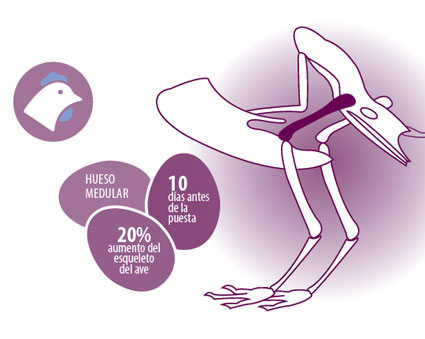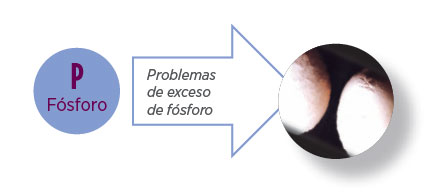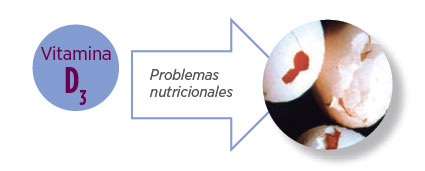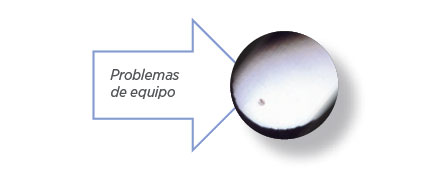Content available at:
Español (Spanish) Português (Portuguese (Brazil))
Today’s layers have a very high genetic potential to produce eggs. Even, in adequate conditions, they can keep the laying over 90% for a long period during the production cycle, therefore presenting a high persistence.
But, it is the market conditions that will determine the economic convenience of producing eggs of a certain external and internal quality.
SHELL QUALITY
The freshness of the egg and the quality of the shell, including color and cleanliness, are paramount sale parameters. To improve the quality of the shell and prevent calcification problems, it is crucial that the birds start laying with an adequate calcium reserve, which brings with them a well-formed marrow bone. The calcium from the medullary bone is always available for the formation of the shell.
Therefore, it is necessary to deliver enough nutrients in the diet at the right time for this process to work. Otherwise, the medullary reserve will be maintained at the expense of the structural bone, leading to leg weakness and cage fatigue .
The formation of the medullary bone, mainly in the tibia and femur, begins around 10 days before laying. This results in an increase in the bird’s skeleton by 20%. This is due to the hormonal synergism of estrogens and androgens, that indirectly increase the absorption and retention of calcium and phosphorus. This process is reflected in the growth and coloration of the combs and wattles. During laying, bone marrow formation occurs between each ovulation and is exclusively due to estrogens.
The particle size of the calcium source is one of the most important measures to maintain a good shell quality.
Particles> 2 mm.
Particles larger than 2 mm are retained in the gizzard, slowly dissolving and thus delaying the assimilation of calcium. This dietary calcium will be available at night, which is when the bulk of shell calcification occurs and the hen will not have to rely exclusively on calcium from the bone marrow.
Particles from 2 to 5 mm.
Provide the layers with a good amount of calcium in particles of 2 to 5 mm. before the dark period, to help improve shell quality.

The dietary level of available phosphorus is also important for shell quality. During growth, an appropriate level and ratio of available calcium and phosphorus are necessary for optimal bone calcification and medullary bone formation. However, during lay, a high level of available phosphorus inhibits calcium mobilization from the bones.
This happens because although dietary calcium is available at night, the hen will always turn to the bone marrow to obtain part of the calcium that goes to the shell and the mobilization of calcium from the bone implies the presence of a high level of phosphorus in the blood.
Therefore it is necessary to limit the level of phosphorus available in the diet, especially after 60 weeks of age to 0.25 – 0.30%, to improve shell quality. 
The presence of an adequate level of vitamin D3 in the diet is essential for good bone and shell calcification. Vitamin D3 metabolites are now available to increase calcium retention. 
It is also important that the diet contain adequate levels of zinc, manganese, and copper; since they participate in the formation of the egg membranes or cuticles and the organic matrix of the shell. Zinc aids in the availability of carbonate from calcium carbonate. The addition of these minerals through a good organic source is beneficial.
The density of the birds should not increase nor should the frequency of egg collection decrease. Furthermore, we should not subject birds to sudden changes in lighting and stress. Equipment, including transport and sorting of eggs, must be properly designed with no sharp parts. 
Subscribe now to the poultry technical magazine
AUTHORS

Layer Longevity Starts at Rearing
H&N Technical Team
The Strategy for a Proper Infectious Bronchitis Control
Ceva Technical Team
Elevate Hatchery Performance with Petersime’s New Data-Driven Incubation Support Service
Petersime Technical Team
Maize and Soybean Meal Demand and Supply Situation in Indian Poultry Industry
Ricky Thaper
Production of Formed Injected Smoked Chicken Ham
Leonardo Ortiz Escoto
Antimicrobial Resistance in the Poultry Food Chain and Novel Strategies of Bacterial Control
Edgar O. Oviedo-Rondón
GREG TYLER INTERVIEW
Greg Tyler
Insights from the Inaugural US-RSPE Framework Report
Elena Myhre
Newcastle Disease: Knowing the Virus Better to Make the Best Control Decisions. Part II
Eliana Icochea D’Arrigo
Avian Pathogenic E. coli (APEC): Serotypes and Virulence
Cecilia Rosario Cortés
The Importance of Staff Training on Animal Welfare Issues in Poultry Industry
M. Verónica Jiménez Grez
Rodent Control is a Key Factor in Poultry Biosecurity and Sustainability
Edgar O. Oviedo-Rondón